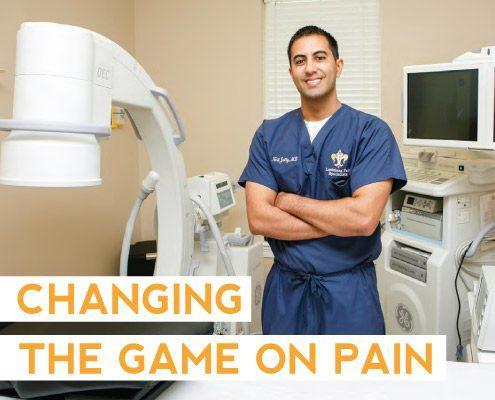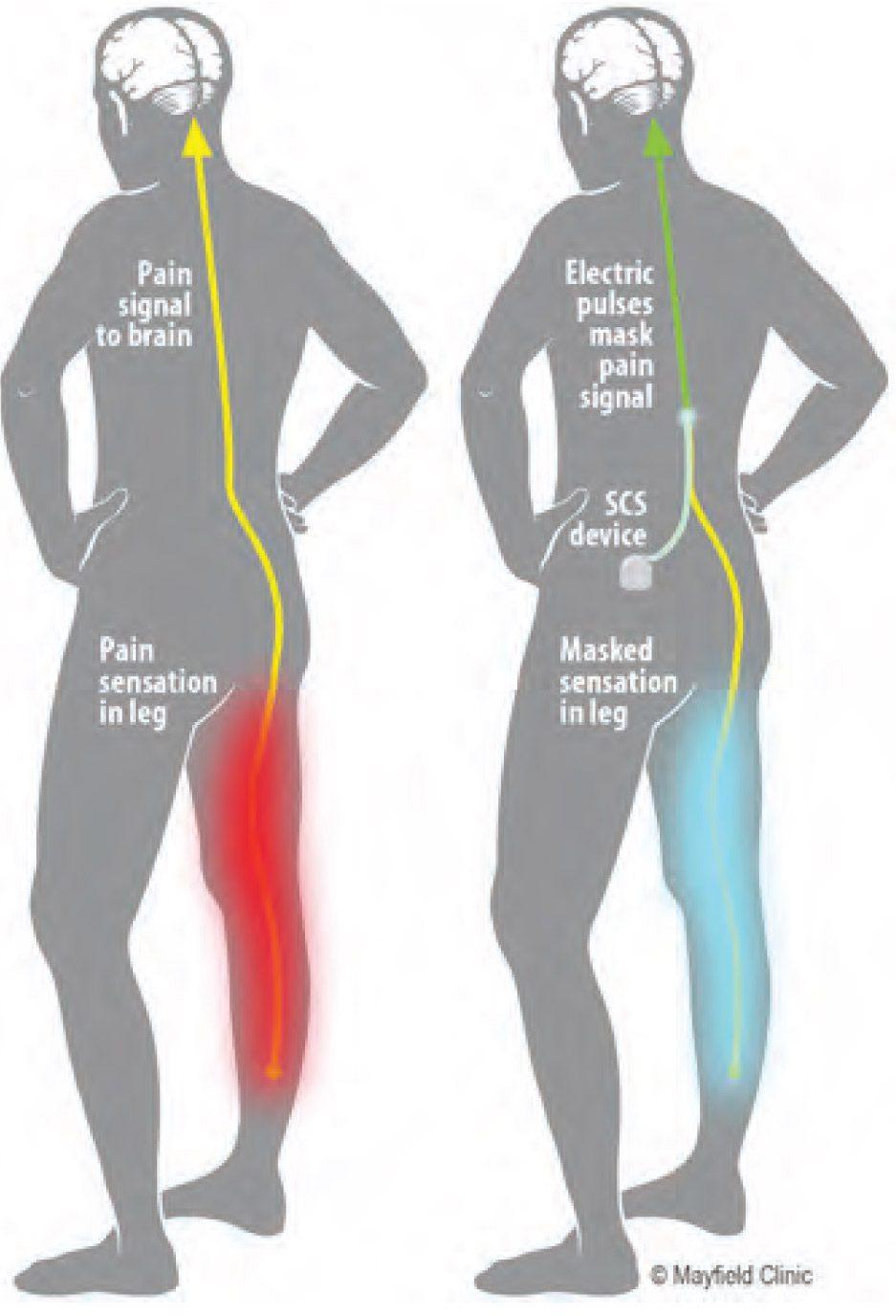

Chronic pain affects 100 million Americans, more than heart disease, cancer and diabetes combined. The debilitating disease is the cause for 40 percent of work absences due to back pain, second only to the common cold (50 percent). Chronic pain costs the nation more than $635 billion each year in medical treatment and lost productivity expenses.
Spinal cord stimulation, also called neurostimulation, is an important therapy option for patients who have not been able to alleviate their chronic pain through traditional methods such as medicine or surgery.
“Patient’s can often see a reduction in pain by 50 percent or more”
Dr. Neil Jolly and the team at Louisiana Pain Specialists provide an alternative approach to treating pain via multiple types of spinal cord stimulation (SCS). With new innovations in this groundbreaking technology, SCS is changing the way many practitioners manage their patient’s pain and patient’s can often see a reduction in pain by 50 percent or more. These different types of innovations in SCS are helping manage chronic pain and improving patient’s quality of life.
What Is Spinal Cord Stimulation (SCS)?
Spinal Cord Stimulation, or SCS, offers a treatment option for some of the estimated 100 million people who suffer from chronic pain in the U.S. SCS works by delivering small electrical pulses to
the pain sensing pathways of the spinal cord, effectively altering the pain signals traveling to the brain. SCS is typically prescribed for the treatment of pain of the back, trunk, or limbs. It is most commonly used to treat severe low back and lower extremity pain. Thousands of patients with severe chronic painful conditions have received relief with spinal cord stimulation.

Overview of Spinal Cord Stimulator Systems
- The key components of a rechargeable SCS system are leads, an implantable pulse generator (IPG), patient remote control, and a portable charging system.
- The leads are thin wires that deliver precise pulses from the pulse generator to the spinal cord.
- The implantable pulse generator (IPG) is an implantable device that features a rechargeable battery and other electronics that deliver the pulses to the leads. The pulse generator is placed surgically under the skin, usually in the buttock or the abdomen. The IPG is similar in function and appearance to a pacemaker.
- The remote control device allows the patient to turn the system on and off and adjust stimulation within parameters set by physicians.
- The charging system is used by the patient to recharge the IPG battery after it is implanted.
Determining if SCS Therapy is Appropriate for a Candidate
SCS therapy offers an evaluation period: a candidate for SCS can test-drive the therapy during the evaluation period using a temporary external system. To trial the therapy, a minor procedure
will be performed to place the leads in the candidate’s back. Leads are positioned using a small needle. They are then connected to an external pulse generator that is worn on a belt for 5-7 days. During this period, the system’s programs are adjusted and fine-tuned to best alleviate the patient’s pain. After this period the candidate will report to the doctor how much pain relief was felt. Together, the candidate and doctor can decide if SCS therapy is something they would like to continue to receive. If so, receiving an SCS implant is the next step. This requires a minor surgical procedure to place an implantable pulse generator (IPG) beneath the skin.
“Thousands of patients with severe chronic painful conditions have received relief with spinal cord stimulation”
A spinal cord stimulator works by masking pain signals before they reach the brain. A stimulator device delivers electric pulses to electrodes placed over the spinal cord. Modified by pulses, the pain signals are either not perceived or are replaced by a tingling feeling.
At Louisiana Pain Specialists, we serve the Metro New Orleans area at five different locations: in Kenner at 231 West Esplanade Avenue, Suite B; in Metairie at 3434 Houma Boulevard, Suite 301; in New Orleans at 3439 Prytania Street, Suite 501; in New Orleans East at 5621 Read Boulevard; and in Marrero at 4520 Wichers Drive, Suite 205. We accept all insurance plans, our insurance specialist will confirm your coverage prior to attending your appointment. To make an appointment to learn how our physicians can alleviate your chronic pain, call (504) 267-1185. An appointment is required at all 5 locations, so join us at a location near you!
The content on this blog is not intended to be a substitute for professional medical advice, diagnosis, or treatment. Always seek the advice of qualified health providers with questions you may have regarding medical conditions.
